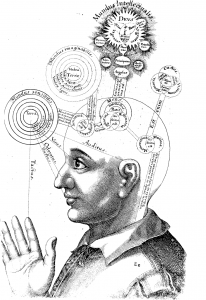“To fully understand poetry, we must first be fluent with its meter, rhyme and figures of speech, then ask two questions: 1) How artfully has the objective of the poem been rendered and 2) How important is that objective? Question one rates the poem’s perfection; question two rates its importance. And once these questions have been answered, determining the poem’s greatness becomes a relatively simple matter.”
 A recent comment by a fellow poet on my post about negative capability got me thinking about the dance between the known and the unknown in the creative act. Alejandro Escude points out that some poets seem to “have something to say and say it” rather than adopting a “neither here nor there approach.” He mentions poets in either camp that share certain stylistic qualities with their comrades in the same camp. And while I agree that William Stafford writes a very different kind of poetry than Sharon Olds, I still believe that it is actually negative capability that makes both of them first-rate poets.
A recent comment by a fellow poet on my post about negative capability got me thinking about the dance between the known and the unknown in the creative act. Alejandro Escude points out that some poets seem to “have something to say and say it” rather than adopting a “neither here nor there approach.” He mentions poets in either camp that share certain stylistic qualities with their comrades in the same camp. And while I agree that William Stafford writes a very different kind of poetry than Sharon Olds, I still believe that it is actually negative capability that makes both of them first-rate poets.
In an early scene of the film version of Dead Poets Society, Robin Williams encourages his students to rip out the introduction to their set-text poetry anthology written by the fictitious J. Evans Pritchard, PhD. Dr. Pritchard’s essay is a striking, if hyperbolic, example of how literary criticism can stray so far from the creative act as to reduce the experience of a poem to an exercise in mathematical graphs. The repeated use of the word “objective” in relation to poetry–its “importance,” and how “artfully” it is “rendered”–makes me laugh every time.
Yet poets do set out with, if not a concrete objective, often a burning image or idée fixe. I think of this as the gnostic aspect of writing–the light splashed on the wall of the cave that entices us forward. It also includes everything along the way that the artist brings by way of knowledge, and the cognitive-intellectual elements that manifest in the poem.
By way of analogy with theology, gnosis also means “a special knowledge of spiritual mysteries.” (OED) I contrast this with nescience, which literally means lack of knowledge but, again in an ontological vein, can also mean, “agnostic; asserting man’s necessary ignorance of the ultimate constitution of the universe.” (OED) If we take “the universe” and its “spiritual mysteries” to be represented in miniature by the poem itself, then the dance between gnosis and nescience can be thought of as the act of creation itself.
It is nescience, though, above all, that allows this little universe to find its shape. As much as a poem can sometimes seem to write itself, through a white-hot moment of inspiration, still the act of writing is a process of unfolding–the poem revealing itself, line by self-aware line, first to the author, then to the world. As Robert Frost is often quoted as saying, “no surprise for the writer, no surprise for the reader.” Surprise can only happen when one is willing to not know.
And so, far from just milquetoast dithering, negative capability is what actually makes poetry poetry–letting in the strange, unforeseen resonances, the “precious nonsense” that makes even the most mundane or straightforward subject transcend its existence in words. For all the sense of rightness, fierceness, and concrete meaning a poem can convey, in the messy act of its making, I believe authors of every stripe trip lightly between “special knowledge” and “necessary ignorance.”